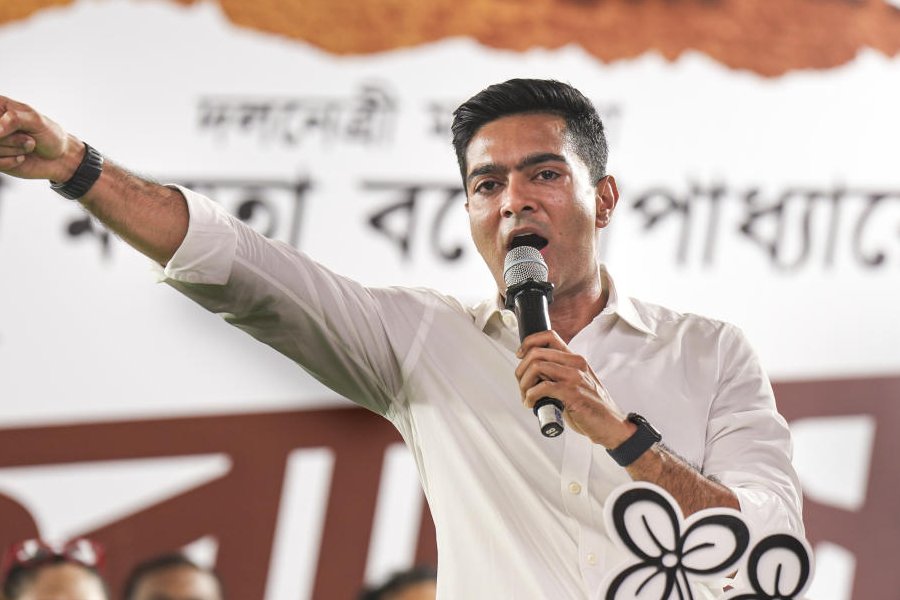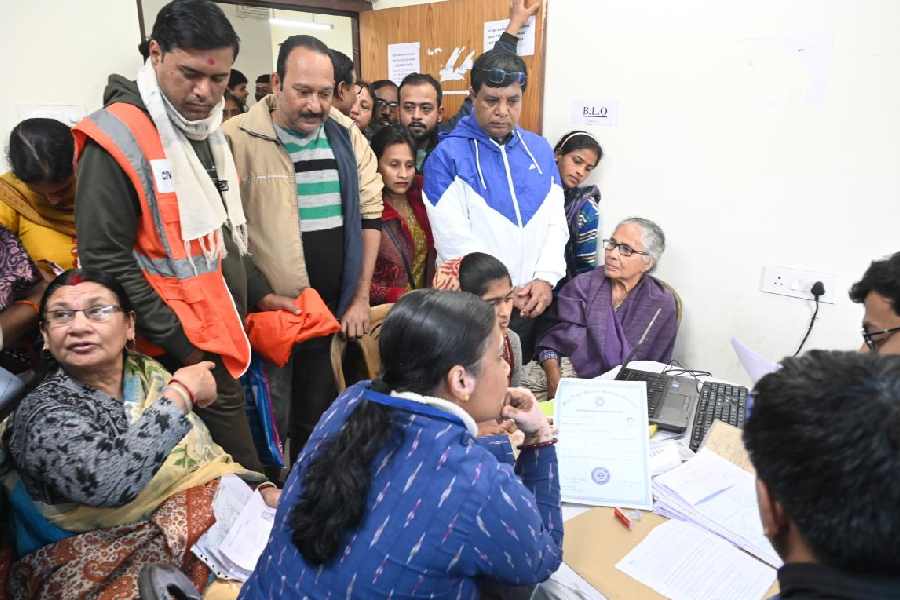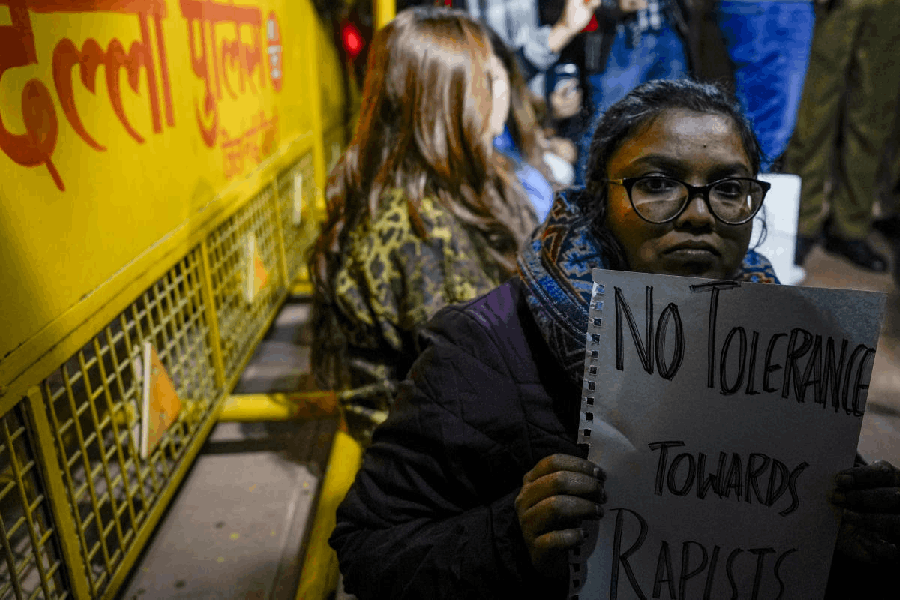 |
 |
 |
 |
| LET IT BE: (From top) The soon-to-be-released Kambakkht Ishq, which was passed with hardly any cuts, Angels and Demons, Dev D and Pankh. (Below) CBFC chairperson Sharmila Tagore |
 |
T he two men were locked in a deep kiss. The team with the scissors found nothing wrong with the scene in Sudipto Chattopadhyaya’s Pankh. What troubled them was the climax. Confronting his mother for bringing him up as a girl, the film’s protagonist stands nude before her.
In another age, few filmmakers would have thought that a climax such as this would ever see the light of day. But what was unthinkable yesterday is passé today. Films are being passed with minimal cuts, with abusive language, skin and adult themes. Not surprisingly, Chattopadhyaya is hoping to see the prickly scene back in his film.
It’s the evolution of the C-word. Film censorship in India has graduated more substantively towards certification and filmmakers are celebrating, albeit cautiously.
“We have to start a movement away from the word censor,” declares Sharmila Tagore, chairperson of the Central Board for Film Certification (CBFC). “CBFC classifies films and gives certification. We also suggest some cuts relying on certification.” The board hands out the viewing certificate to all cinema in Indian and foreign languages shown in India — documentary and feature films and what is aired on television.
But till 1983, the CBFC was indeed preceded by the Censor Board (CB) and till today many see the film certifying body as one that censors. “I am still battling with the CB to retain the last scene. The climax hinges on that very traumatic sequence,” says Chattopadhyaya.
Pankh’s tussle apart, there have been attempts to create a level playing field. Many in the cinema industry believe that the board has been allowing directors greater freedom. Anurag Kashyap, whose film Dev D had explicit sex, believes that CBFC has changed drastically over the years. “The censor board has become a lot more liberal.”
Director Mahesh Bhatt describes the overall accommodating approach by the CBFC as “a quantum leap.” Actor-director Rajat Kapoor lauds the CBFC’s position on his film Mixed Doubles, which was about wife swapping. The only cut in the film was a reference to the North-East. “I was in shock,” he says.
The changes are there for all to see. Nobody gasps when a villain chops off Asin’s head bit by bit with a cleaver in Aamir Khan’s Ghajini (2008). Konkona Sen Sharma lets rip the choicest abuse in Hindi in Omkara (2006) and Traffic Signal (2009). Bare male butts are no longer a novelty. Neither is male intimacy.
Many believe the change has come about because of Tagore and her team. “My aim (of certification) is that it should be a collective effort. I believe in talking to everyone to build a consensus,” says Tagore. She favours picking up the phone and sorting out problems with filmmakers.
Vinayak Azad, the regional head of the CBFC in Mumbai, which is one of nine regional offices, stresses that the board does not want to interfere with the filmmaker’s vision. “We are not in the business of film critique but grading what is suitable for impressionable minds and what isn’t,” he says. “One would give an Adult certificate rather than make cuts. Eighty per cent of films is passed with no cuts.”
Regional cinema too has benefitted from the glasnost at CBFC. Bangalore-based A. Chandrashekhar, the chief of the regional wing of the CBFC, says that issues such as live-in relationships, unmarried motherhood and homosexuality that were taboo till a few years ago are now carried without cuts in Kannada films. “Films are a response to social change. We have to be alive to the changes that are happening in society,” he says.
Director Anjan Das adds that the board has “mellowed” and is more balanced in censoring content. His Bengali film Jara Brishtitey Bhijechhilo was cleared without a single cut, though it had an adult theme.
Much of how the CBFC is viewed is shaped by those who chair and run it. Still, the CBFC remains clay to the powers that be. The late director Vijay Anand was booed out of office as head of CB in 2001 for suggesting that pornography have its own dedicated film halls. Actors Asha Parekh and Anupam Kher also ran into nasty controversies of orthodoxy and partisanship.
Director Sanjay Gadhvi recalls that in his 2001 film Tere Liye, the board cut a shot where an actor says: “Shit, I love her so much.” In 2004, after the board met to discuss the fate of Dhoom, Gadhvi asked why his film had not been given a U certificate. “They said it was because of a bit of nudity in the beginning and end of the film. Just as I had turned to leave, they added another reason: the bikes were going too fast. I obviously could not have shown bikes going at 7 kmph in a bike race, but had to graciously accept their view.”
But the times have changed, Kashyap stresses. “There is a huge difference between now and then,” says the director whose first film Paanch, about rockers who get entangled in murder, was held up for years by the censors. “They’d make a cut, send it back, make a cut, send it back. They refused to talk,” he says of the board which was then headed by Parekh. “She was from the Stone Age, I think,” he says.
Parekh, who was chairperson from 1998 to 2001, and Kher, who preceded Tagore, were not available for comment.
But while the last few years have seen films with a plethora of adult themes, the industry believes that it will be a while before Indian cinema is truly free. “Sexuality and thematically subversive content are allowed,” says Bhatt. “But they are still squeamish about political ideology. Nothing that rocks the boat is passed. They are not so liberal yet.”
Kannada director Girish Kasaravalli agrees. “The censor board is still very sensitive and strict about allowing films to make strong political statements. My films are all about political statements. And I invariably end up facing trouble with the board,” he says.
Religion is another delicate area. Angels and Demons — a Tom Hanks starrer — was given an A certificate not because of sex or violence but because of the “sensitivity” involved.” Tagore invited leading Catholic heads to view the film and discuss their apprehensions about the film’s depiction of Christianity.
There are several other no-go areas. You can’t play around with excessive sex, violence and the national anthem. Ram Gopal Varma’s “distorted version” of the Jana Gana Mana in his forthcoming film Rann was denied by the CBFC. The issue is now with the apellate tribunal of the CBFC, presided over by a retired high court judge. “The tribunal system is very good, though I am currently fighting with them,” says Madhu Mantena, producer of Rann.
Documentary films, especially political, are another tricky area. The Independent Documentary Producers Association — a forum of documentary filmmakers — has demanded that documentary films not be cut, but just be graded.
“While ideally I feel the CBFC should not exist, I do find that the new team has tried to engage us in a process of dialogue and participation,” says Rakesh Sharma, whose documentary Final Solutions on the 2002 Gujarat violence faced many hurdles at the CBFC in 2003.
Some believe the time has come to do away with censors. “Why should three people decide what the rest of the country should see,” argues Sharma. “This kind of censorship is a blot on civil society.”
Director Onir seconds that. “The censor board’s rulings are quite ambiguous. A film like Fashion gets A, while violent Ghajini gets U/A,” he says. The maker of Bas Ek Pal and My Brother Nikhil adds he was also appalled to see how the Oscar-winning film The Reader had been “butchered” by the board in India. “Is the Indian adult not adult enough to see adult content? Today such content is easily available on the Internet. So why so much fuss,” he asks.
But Tagore and Azad say they have to be careful that films do not end up offending people. The CBFC has to be responsible to the masses about what it is certifying, they stress. Director Gadhvi agrees. “The job of a censor board in India is much tougher than anywhere else, as it has to take into account public sentiments which can get inflamed at times,” he says. “Given this reality, the censor board has been doing a pretty good job.”
But Bhatt believes that much has still to be done. “We have achieved a lot but we are still far from the ideal situation,” says Bhatt. “Filmmakers will push the bar but the CBFC is by nature about the status quo.”
Sometimes, though, a progressive push comes from within.










